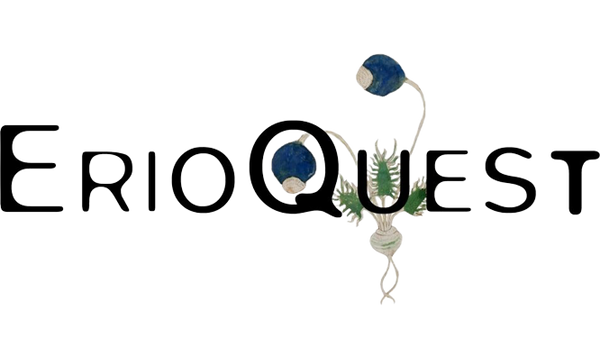Masson's Exploration of South Africa
Article: Seitaro Hamada
I see it! It's Cape Town!"
Francis Masson reflexively looked ahead to port when he heard the report coming down from the top of the main mast. For several days there had been a straight stretch of brown land to port, but now it had morphed into a green forest, and the coastline was becoming more complex. The Cape of Good Hope.
During the Age of Discovery, Cape Town was located on the route that transported tea leaves and spices from Asia to Europe, and prospered as an important supply point. It is also the home of rooibos tea, a popular drink today. After several months on the voyage, they finally arrived at their destination, South Africa.
Good day to you.
After a brief exchange of words with Captain Cook, Masson and his party left the sailing ship Resolution. The ship was to refuel in port for a few days and then head out in search of Antarctica. That sounded interesting, Masson thought briefly, but his heart was more excited by the prospect of studying the vegetation of the South African Cape region that lay before him.
Masson was a plant hunter sent by the Royal Botanic Gardens, Kew in the British Empire, with orders to collect plants in South Africa. During this period, interest in botanical research, which had developed from the cultivation of medicinal herbs, was focused on collecting plants from around the world, and botanical gardens in European countries were sending collectors all over the world. South Africa, in particular, was virtually untouched, and new discoveries were almost certain.
South Africa has a generally mild and comfortable climate, but in addition to being cut off from the outside world with a vast desert to the north and the sea all around, it has a very unique environment, with the rainy seasons in the east and west being opposite, and in the Cape region, the grasslands burn in a huge fire once every ten years. For these reasons, there are many plants that grow only in the Cape region of the world.
In Cape Town, Masson hired an eight-horse ox cart and Scandinavian mercenaries and set out on a 650-kilometer botanical expedition. Already on the first day of his journey, Masson was convinced that his expedition was a success. He found dozens of plants that he had never seen before, even as a gardener at the Kew Botanical Gardens, which had a large collection of plants from all over the world. Although it was a meadow, the grassy areas were covered with white sand, which was not suitable for growing vegetables, which are often grown in Europe. In addition, strong winds were blowing the sand up into the air all the time, creating small dunes everywhere. Still, I noticed some strange plants.
Under a shrub that had lost its leaves and was reduced to branches, there was a grass with leaves curled around it like a corkscrew. Masson carefully dug up the plant. The leaves were surprisingly hard, and underneath were white bulbs that looked like small onions. It was clear that the plant grew in an arid region. Masson carefully placed the plant in the collection box.
Many plants in the Cape region twirl their leaves to protect themselves from the scarce rain and intense sunlight. This albuca blues-Bayeri is one of them.
The Kohekohe natives lived in this area. They are unlikely to grow any vegetables that Masson knows of, but they certainly live off the plants that grow in these dunes. They must know more about these strange plants, and they might even be able to tell him what vegetables would grow in this barren land. Masson decided to ask the natives about their stories.
At the time, South Africa was controlled by the Dutch East India Company, and many of the natives, including the Kohekohe, were slaves who were used as labor. Masson entered the village and talked to one of the Kohekohe through an interpreter. Masson, a gardener, was dispatched as a plant hunter to gather this kind of information. It is difficult to know everything about a plant from a dried specimen like a pressed flower, so it is necessary to bring the plant back to the botanical garden and try growing it.
When one of the kohekohe arrived, Masson pointed to a fist-sized bulb with large leaves.
This is a poison bulb, used to make arrow poison."
Then he pointed to a potato that looked like the shell of a tortoise.
This is used to make bread. They often grow in the bushes."
Masson wrote down everything he heard, where the plants grew, the climate, the soil conditions, etc. During his three-year expedition to South Africa, he sent more than 400 plants to England, where they were classified and named at Kew Botanical Gardens, which was astonished at their strange appearance when they first received them. Some of the plants can still be seen today at the Kew Botanic Gardens, thanks to Masson's detailed local information.
Many of the plants on the market today are native to South Africa. These include gladiolus, iris, and the succulent Haworthia. Plants from the faraway country of South Africa can be enjoyed in Japan thanks to a long process of research on cultivation methods, and one of the first pioneers of this process was Francis Masson. One of the plants he discovered in South Africa bears his name, Massonia.
The curly or jaggedly folded leaves. There are many plants with survival strategies unique to this area, such as bulbs that produce large amounts of nectar to pollinate rats. The South African vegetation that fascinated him has more than 6,000 endemic species in the Cape region alone, and new species are being discovered every year.
End of story.
Translated with DeepL
